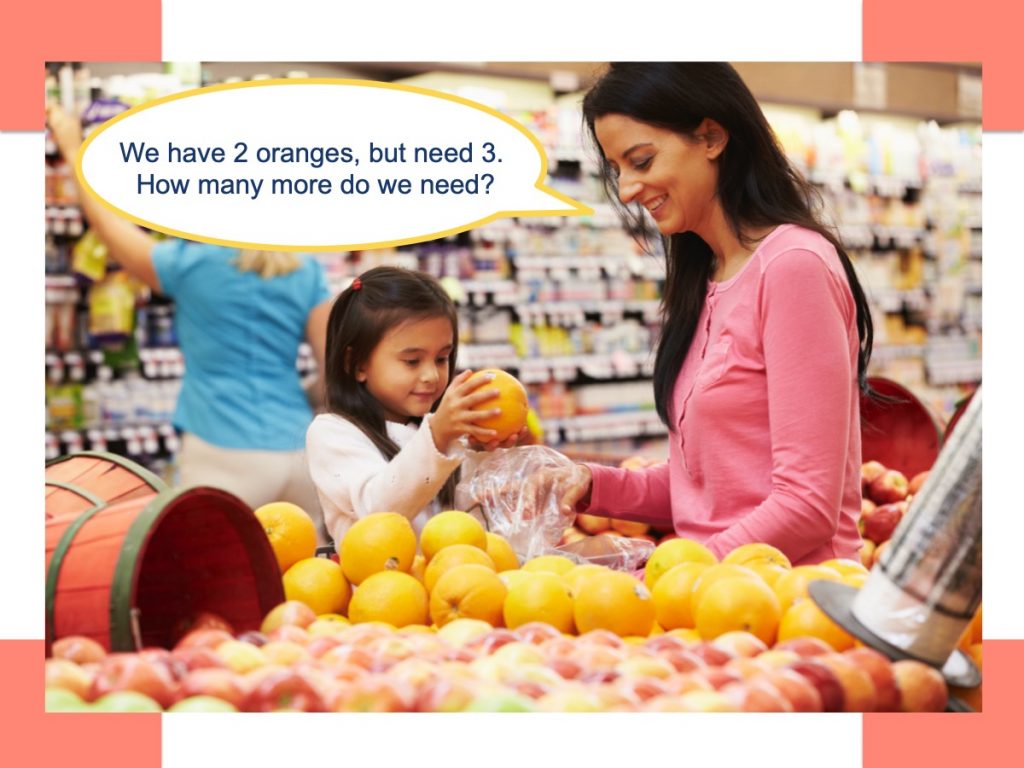
Incorporating math learning into children’s everyday experiences is not a far stretch. Because children have a natural interest in math, they can be engaged in learning about math concepts as part of their daily experiences. By some estimates, more than half of children’s playtime already involves math.
Numeracy can be part of everything from the playground to the grocery store to block play. On the playground, a child might count, “one, two, three,” going up the steps to the slide. Then say, “I’m going down the slide first.” At the grocery store, talk about the number of fruits or vegetables you have. “We have 2 oranges, but need 3. How many more do we need?” Even infants are learning about quantity when they pick up one block, then a second object. As the baby does this, you can add, “one, two” as you touch each block.
You don’t need to create new opportunities for children to support their early math skills. You can guide and scaffold what children already do.
-
- Cardinality
- is the concept that, when counting objects, the last number represents the total number of objects in the set
- Measurement
- includes size, length, height, weight, volume, distance, and time
- Number and operations
- refers to a set of math concepts related to understanding and representing numbers and operations (e.g., addition, subtraction, multiplication, and division) and the relationships between them
- Numeracy
- is the ability to understand and reason with numbers
- One-to-one correspondence
- refers to matching one object to each number word when counting
- Subitizing
- refers to the ability to identify the number of objects in a small group of objects without counting them
- Scaffolding
- is offering the right level of support to help a child achieve more than they would be able to on their own